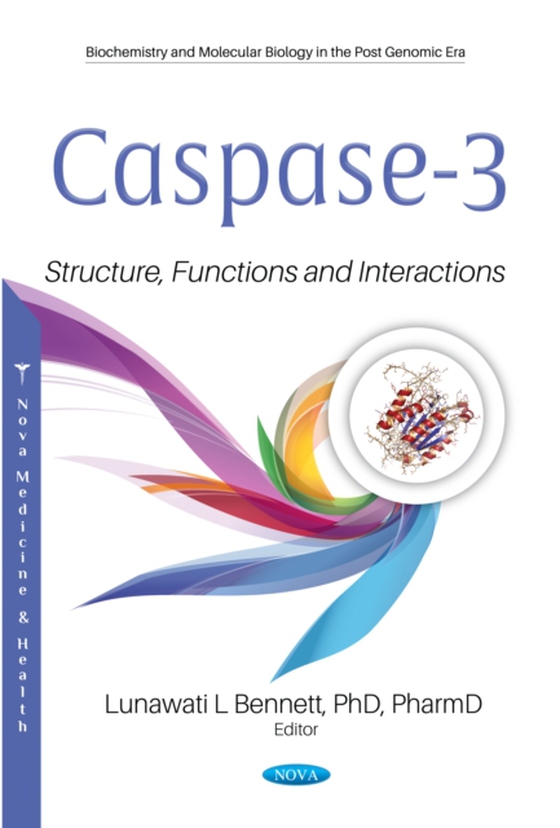
Caspase-3: Structure, Functions and Interactions e-bog
948,41 DKK
(inkl. moms 1185,51 DKK)
"e;Caspase 3: Structure, Functions and Interactions"e; is a book designed as an educational resource for researchers and health care providers who want to learn more about caspase 3. Physicians, pharmacists, other health care professionals can benefit from learning about the function of caspase 3 and its role in diseases and possible treatment options of using caspase 3-like compounds. ...
E-bog
948,41 DKK
Forlag
Nova
Udgivet
27 oktober 2020
Længde
169 sider
Genrer
Molecular biology
Sprog
English
Format
pdf
Beskyttelse
LCP
ISBN
9781536186864
"e;Caspase 3: Structure, Functions and Interactions"e; is a book designed as an educational resource for researchers and health care providers who want to learn more about caspase 3. Physicians, pharmacists, other health care professionals can benefit from learning about the function of caspase 3 and its role in diseases and possible treatment options of using caspase 3-like compounds. New or seasoned scientists with research interests in caspases can learn novel ideas or interventions using caspase 3. Caspases are a family of enzymes that play an important role in developing normal organ formation and function, maintaining homeostasis, and regulating cell death and inflammation. There are 14 known caspase enzymes in mammals, and 12 present in humans. Each caspase varies in purpose and mechanism of action. Caspase-3 is a key cysteine-aspartic protease that is largely known for its role in executing cell death or apoptosis. There are a total of 8 chapters in the book. Chapter 1 introduces the caspase family, their classification, regulation, and role in apoptosis. Chapter 2 discusses caspase-3 role in causing or preventing diseases such as cardiac, diabetes, and cancer. Chapter 3 highlights the emerging roles of caspase-3 in biological processes beyond cell death. Complex regulatory mechanisms are required to coordinate timely and specific activation of caspase 3. As cancer continues to escalate as a major public health concern, caspase 3 role as the prominent executioner of apoptosis plays a central role as a key cellular protein as discussed in Chapter 4. Chapter 5 highlights our understanding on the activation of caspase 3/9 in starfish unfertilized eggs which elucidate the relationship of apoptosis in the vertebrates and nematodes. Chapter 6 discusses the interaction of caspase 3 with apoptotic peptide known as (KLAKLAK)2. Because of the cationic and amphipathic nature of (KLAKLAK)2, this peptide has the unique ability to cause the formation of apoptosome. Chapter 7 identifies caspase 3 role in central nervous system, aging, regeneration of neurons, and in Alzheimer's, Parkinson's, and other neurodegenerative diseases. Chapter 8 discusses biomarker and methods to detect caspase 3, and its interaction with different substrates and compounds. Recent reputable books, journals, monograms, clinical trial results, and hands-on research data are used. This book was written by doctor of philosophy (PhDs) that are doing research in the field of caspase 3. We hope this book become a valuable resource for researchers and others who want to know more about caspase 3 structure, functions and interactions.
 Dansk
Dansk

